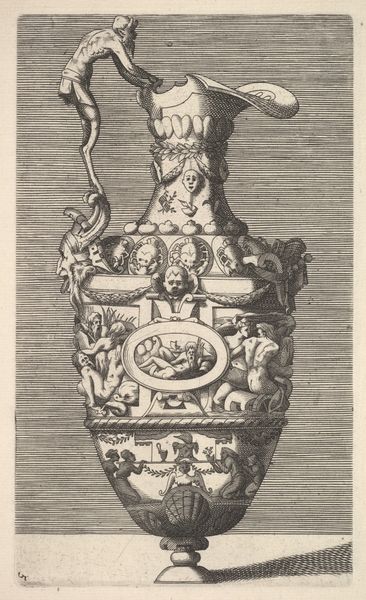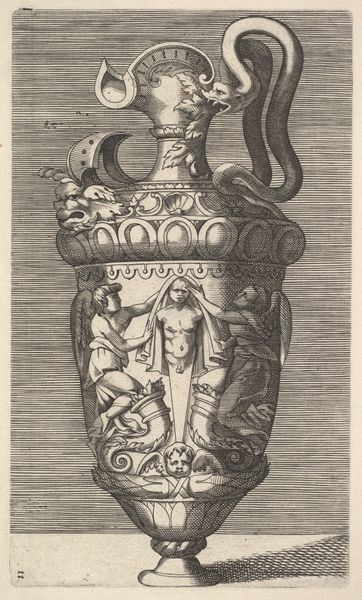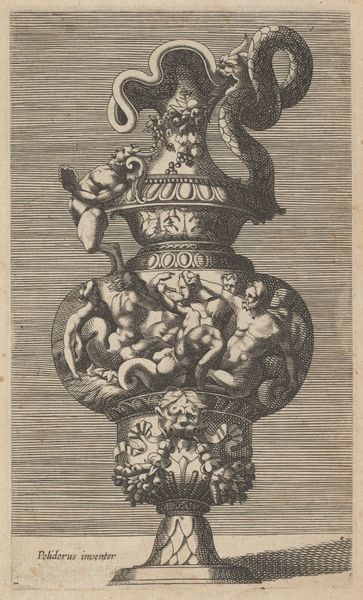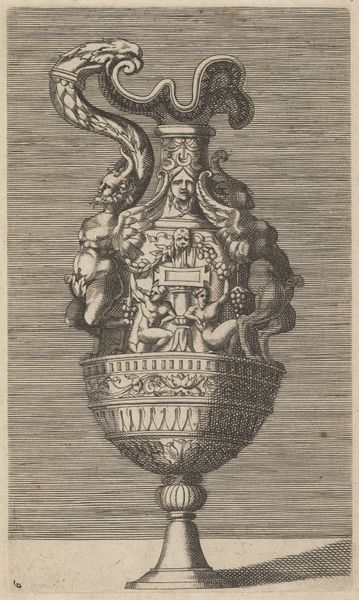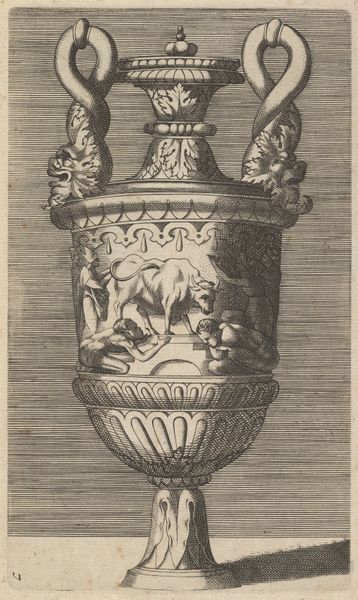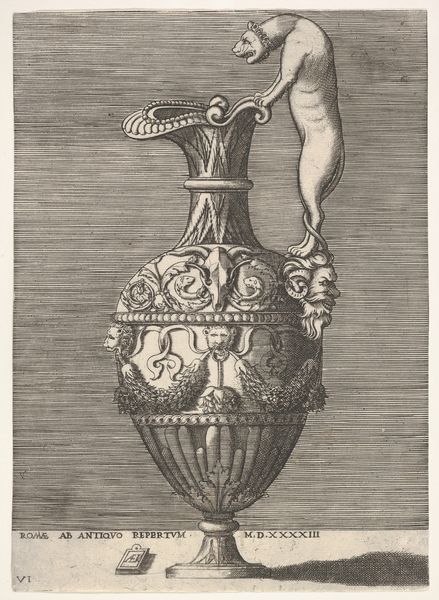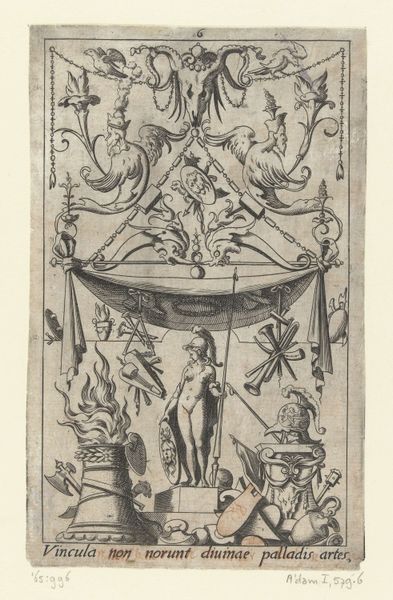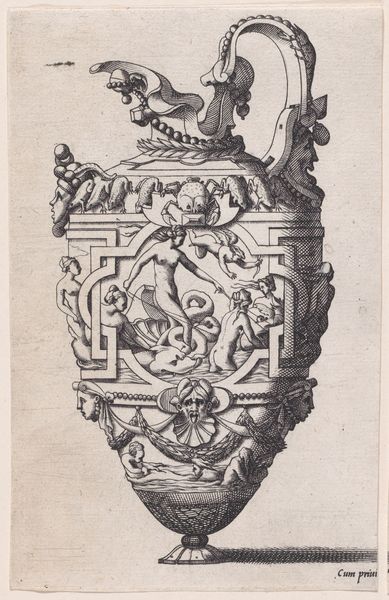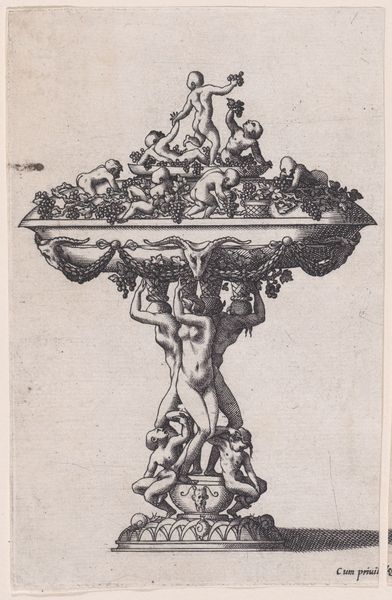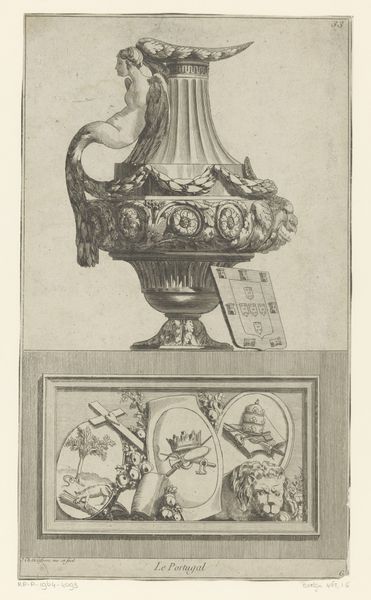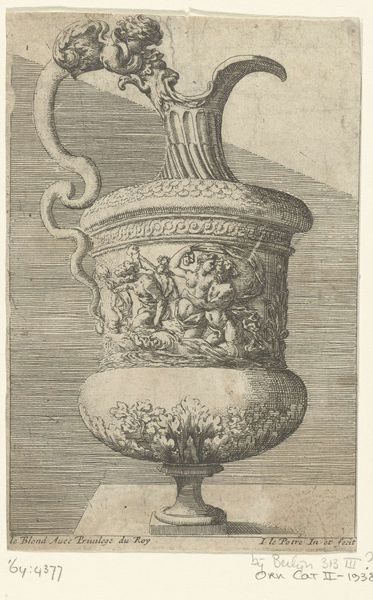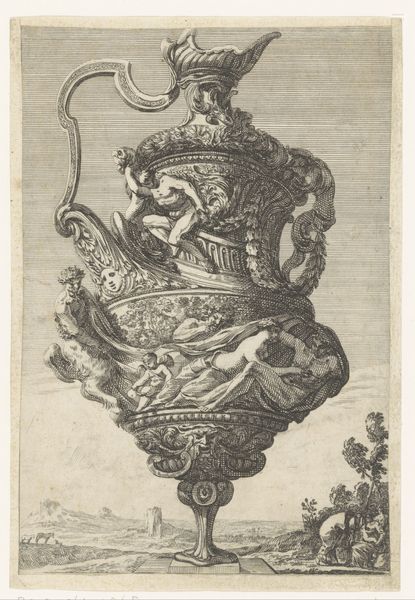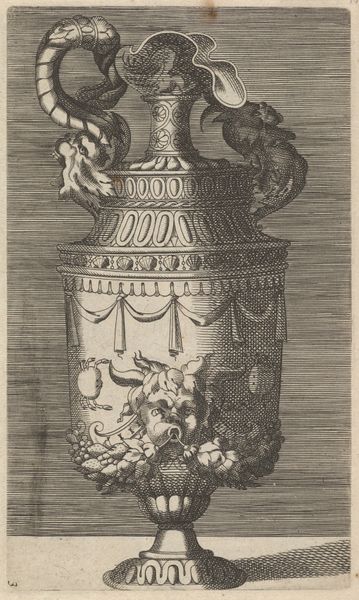
drawing, print, etching, engraving
#
drawing
#
allegory
#
baroque
# print
#
etching
#
figuration
#
nude
#
engraving
Dimensions: Plate: 7 1/2 x 4 7/16 in. (19 x 11.2 cm)
Copyright: Public Domain
Curator: Welcome. We’re looking at "Vase with Dancing Women and Satyrs," a fascinating print created sometime between 1670 and 1700, currently housed here at the Met. It's the work of Ren\u00e9 Boyvin. Editor: Oh, it's a bit much, isn't it? All that detail, all those writhing bodies. Gives me a bit of the shivers, honestly, like a bad dream you can't shake off. It's dizzying. Curator: Well, that density of imagery is characteristic of the Baroque aesthetic. The etching and engraving showcase a vase, adorned with multiple figural scenes referencing classical mythology and allegorical narratives. Boyvin expertly utilizes line work to create texture and volume, transforming a mundane object, a vase, into a stage for elaborate storytelling. Editor: Storytelling, right, but what story is being told? The dancing figures feel ecstatic, maybe a little too wild for comfort. Is it supposed to be some idyllic scene? It feels closer to chaos. The faces, too, are… unsettling. Is it supposed to be a party, or a fever dream? Curator: Context is crucial here. The print reflects the aristocratic taste for antiquity prevalent during the Baroque era. Vases, often symbols of status and refinement, become vehicles to display knowledge of classical literature and mythology. This isn't necessarily about realism or moral storytelling but about showcasing erudition and cultural capital. The dancing figures, the satyrs, represent a playful abandon, acceptable, perhaps even desirable, within courtly culture. Editor: Ah, so it’s an aristocratic flex. Still, it does make me think, what's actually inside the vase? I see madness; maybe that’s where it all leads: holding madness in a fancy vessel for admiration and discussion. The tight compositions speak about the imposition of rules upon natural drives, resulting in social displays as artificial and unnatural as this ornamented object. Curator: It's a valid reading. It underscores the complex interplay between form and content. We appreciate the visual artistry and also remain critical towards the aristocratic displays that shaped the historical perceptions of culture and taste. Editor: Right! This makes me realize: you can’t ever fully "contain" those wild drives, those messy human feelings. Art, life...they spill out, just like from an overfilled cup.
Comments
No comments
Be the first to comment and join the conversation on the ultimate creative platform.
